- MOE
- National Parks of Japan
- Daisen-Oki National Park
- Characteristics
main body
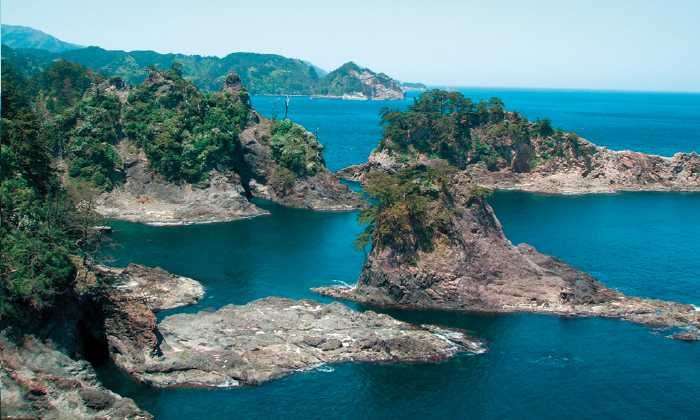
Characteristics
Mountains and Islands Where Myths Interlace
A series of volcanoes where the gods reside, and islands that breathe with ancient memories
A series of volcanoes where the gods reside, and islands that breathe with ancient memories
Date of Designation: February 1, 1936
Area: 35,353 ha (land area)
Related Prefectures: Tottori, Shimane, Okayama
Area: 35,353 ha (land area)
Related Prefectures: Tottori, Shimane, Okayama
Daisen-Oki National Park is a park marked with numerous variations, encompassing a mountainous area from Mt. Daisen to Mt. Hiruzen and Mt. Kenashi, Mt. Senjo to Mt. Mitoku, the coastal area of the Shimane Peninsula, as well as Mt. Sanbe and the Oki Islands.
The mountainous area consists of a variety of elements that include dynamic volcanic landforms, rich forests, and a vast grass-covered plain. Depending on the location, visitors can savor views of unique mountains and diverse flora and fauna that adapted to the environment.
The seaside and islands feature a range of seashore landscapes formed by a combination of complicated factors, such as volcanic activity, crustal changes, climate changes, alluviation, and erosion, in addition to the biological environment unique to beaches and islands affected by ocean currents.
In addition, the Japanese mythology, Kunibiki Shinwa, was set in this area and the area retains the traditional relationship of nature, inhabitants and their lives.
The mountainous area consists of a variety of elements that include dynamic volcanic landforms, rich forests, and a vast grass-covered plain. Depending on the location, visitors can savor views of unique mountains and diverse flora and fauna that adapted to the environment.
The seaside and islands feature a range of seashore landscapes formed by a combination of complicated factors, such as volcanic activity, crustal changes, climate changes, alluviation, and erosion, in addition to the biological environment unique to beaches and islands affected by ocean currents.
In addition, the Japanese mythology, Kunibiki Shinwa, was set in this area and the area retains the traditional relationship of nature, inhabitants and their lives.
Terrain/ Scenery

Northern cliff of Mt. Daisen
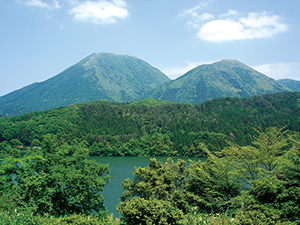
Mt. Sanbe and Ukinunonoike Pond
Mountainous Area
The mountainous area encompassing Mt. Daisen, Mt. Hiruzen and Mt. Sanbe was mainly formed as a result of volcanic activity.Mt. Daisen, the highest peak in the Chugoku region (1,729 m above sea level), is a volcanic mountain marked by a lava dome formed over the stratovolcano, as well as the bluffs on a northern and southern cliff extending to the mountain top present rough mountain scenes.
Hiruzen Sanza (Mt. Kamihiru, Mt. Nakahiru and Mt. Shimohiru) is also a volcanic mountain. The foot of the mountain is the Hiruzen Highland, which was formed as a result of a volcanic eruption parching a lake.
In addition, Mt. Sanbe has a lava dome and three lakes in circumference, which were also made by repeated volcanic activity.
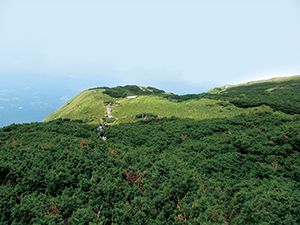
The Wind-swept Shrub Zone of Daisen Japanese Yew Trees
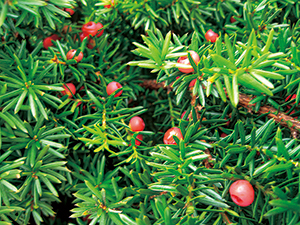
Daisen Japanese Yew
Mt. Daisen is covered with abundant forests and above all, it is marked by one of the largest natural beech forests in western Japan that spreads over the mountain at 800 m to 1,300 m above sea level and the wind-swept shrub zone of Daisen Japanese Yew trees growing at 1,300 m above sea level and above. Most of the other mountains, besides Mt. Daisen, are also thickly forested, and some of the typical sites include beech forests in Mt. Kenashi and Mt. Sanbe, as well as the evergreen forest and cool-temperate forest in Mt. Mitoku.
Another characteristic of this park is the distribution of grassland, which is represented by the ridgeline of Mt. Hiruzen and the summit and foothills of Mt. Sanbe.
Another characteristic of this park is the distribution of grassland, which is represented by the ridgeline of Mt. Hiruzen and the summit and foothills of Mt. Sanbe.
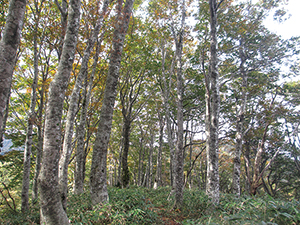
A beech Forest in Mt. Kenash
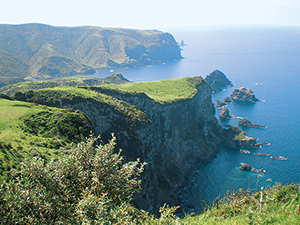
Kuniga Coast
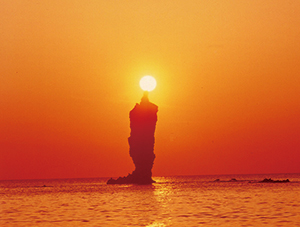
Rosoku-jima Island (Candle Island)
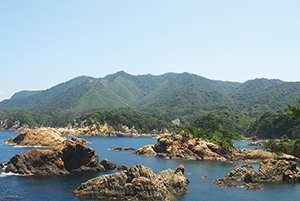
Hinomisaki Beach (Raised beach)
The Coast and Islands
The Shimane Peninsula was thought to be separated from the mainland during previous fault events, and later the Izumo Plain, Matsue Plain, and the Yumigahama Peninsula formed as a result of alleviation of rivers on the mainland, reconnecting to the mainland once again. The foundation of the Oki Islands was created during ancient volcanic activity where the land sank into the sea and connected to the mainland repeatedly as a result of crustal and climate changes that followed, forming isolated islands about 10,000 years ago.
After the lengthy process just described, a submerged beach and raised beach were formed. As the peninsula eroded from the wintry seasonal winds and ocean waves, a great variety of seashore landscapes encompassing sea cliffs, cave mouths and caverns were generated.
Plants
In Mt. Daisen, the wind-swept shrub forest zone situated at 1,300 m above sea level is populated by alpine flora such as Phyllodoce nipponica Makino, Gaultheria adenothrix, Geranium shikokianum Matsum and Veronicastrum japonicum (Nakai) T.Yamaz. var. austral (T.Yamaz.) T.Yamaz, showcasing splendid alpine meadows in early summer.
A deciduous broadleaf forest lies across the hillsides, which is inhabited by a great variety of flora including the spring ephemeral such as dogtooth violets.
A deciduous broadleaf forest lies across the hillsides, which is inhabited by a great variety of flora including the spring ephemeral such as dogtooth violets.
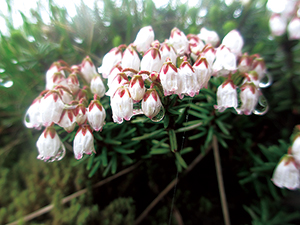
Phyllodoce nipponica Makino
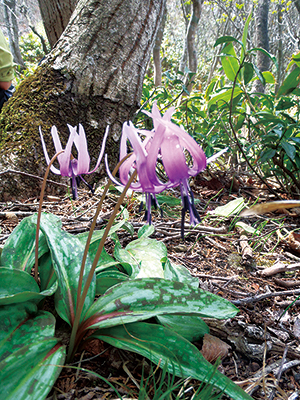
Dogtooth Violets
On the Okinoshima island, various vegetation coexist in low-lying areas along the coastline, such as Ramanas roses (plant normaly found in Northern Japan), Nago orchids (plant normally found in Southern japan), Aster spathulifolius (continental plant ), and Allium schoenoprasum var. orientale (subalpine plant). In addition, the marine area is home to all of the species of seagrass found in the Sea of Japan and famed as one of the largest seagrass beds. It is also marked by the habitat of Caulerpa scalpelliformis var. denticulate, the only seaweed listed as the National Natural Monument.
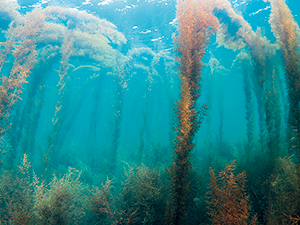
A seaweed Forest of Chibu
Wildlife
A deciduous broadleaf forest lies across the hillsides in Mt. Daisen, which is inhabited by a great variety of fauna including Luehdorfia japonica.
The grassland of each area is a habitat and growing environment of rare grassland fauna, and of particular note is Melitaea protomedia protomedia, which only survives on the grasslands around the Chugoku Mountains.
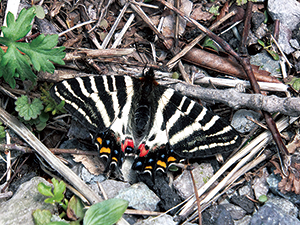
Luehdorfia japonica
On the Okinoshima island, the inland area is inhabited by indigenous Oki salamander, forming unique ecosystems.
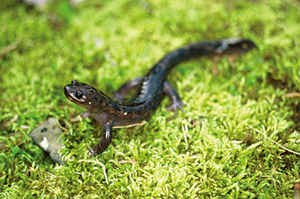
Oki Salamander
The Shimane Peninsula abounds with rocky shores that people cannot easily access, making it an ideal breeding ground for seabirds. Above all, the Fumi-shima Island is one of Japan's most vital rookeries for the black-tailed gull.
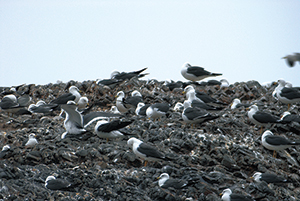
Fumi-shima Island
Culture
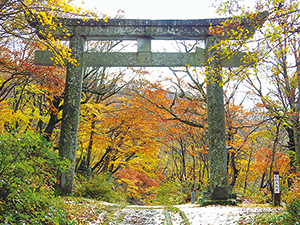
The Torii Archway of the Daisen-michi Road (Yokote-michi Road)
Mountainous Area
Mt. Daisen has been traditionally worshiped as a sacred mountain and since the initial opening of the Daisen-ji Temple took place during the Heian era, it was crowded with many worshippers up to the Edo era. Today, remnants from those days are found along the pilgrimage route (Daisen-michi road).

Mt. Mitoku Sanbutsuji Main Temple
In addition, Mt. Senjo and Mt. Mitoku, which are honored as the Hoki Sanrei, along with Mt. Daisen has been regarded as the place of mountain worship since days of old.
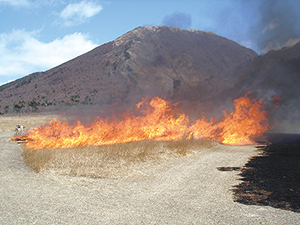
Firing of Mt. Sanbe and Nishinohara
By contrast, there are grasslands across Mt. Sanbe and Mt. Hiruzen, where people engage in cattle breeding and other operations to make a living. Today, some places still inherit the tradition of initial firing to ensure traditional management methods.
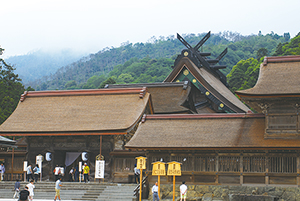
Izumo-taisha Shrine
The Coast and Islands
Both the Okinoshima Islands and Shimane Peninsula are the setting of Japanese mythological tales such as Kunibiki Shinwa.
Shimane Peninsula in particular has a number of historical sites and landmarks, which are said to serve as the center of the ancient Izumo culture and associated with the myths, including the Izumo-taisha Shrine, Hinomisaki-jinja Shrine, and Kakanokukedo.
